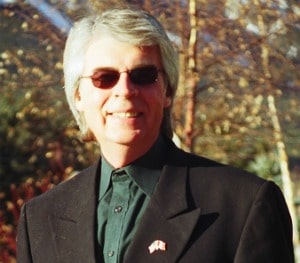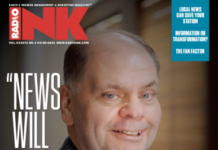
After a year of tidying up around my local radio station, being the jock “go-fer” and riding the board during remotes, I was going to be allowed to pull some weekend fill-in shifts. Although I had already determined I was going to be a professional, radio smart-ass – surrounded by the hits – when I thought of it, I was terrified. My mouth would become Burning Man-dry.
Prior to hitting the air for the first time, I was invited into my PD’s office for a partial reading of the radio liturgy – a liturgy that is still in effect with full force today. Unquestioning compliance required. “Program Director” was an actual management position at the time, as it entailed shepherding a dozen or more on-air personnel, an eight-person newsroom, four copywriters, two on-air operators/producers, two more prod guys, and me, the part-time board-op and jock-slave.
This meeting had some gravitas. Plus, I assumed the information about to be injected had credibility and was backed up by useful knowledge based on experience. Even as this was my first approach to the throne, I had already heard some tidbits of what was to come. The atmosphere was cordial. What I didn’t know – and had no way of knowing – was that what I was about to accept as “gospel” would, to some degree, cripple part of my approach to being on the air for the better part of the next dozen years.
The PD intoned: “Even though there are many people listening to the radio when you are on the air, you need to understand you are talking to only one person. I suggest you choose a good friend of yours as your ‘personal listener.’” He explained further. “Another way of thinking about this is that you are speaking to that one person. This also means: You do not talk at them!” I accepted the advice as the factual piece of information it was intended to be, thanked my boss, shook his offered hand, and blissfully wandered out of the meeting, wondering who would be that “one person” to whom I was going to be talking. (I was, even so, a little confused, as a few of our guys were performing as cranked-out manics. To? At? Huh?)
For the next dozen years or so, I worked a few thousand air shifts getting my chops together, completely confident in the value of what I had been instructed years before, as if the information was an enlightening loaf of manna from heaven. I was secure in the “fact” that my performances were precisely directed, and effective, as well as being accepted by my “fantasy friend” in the audience. Like every other jock in the world, I had been inoculated and indoctrinated. I had blindly accepted untested “dogma” without question or challenge, and without prior knowledge. The sermon was delivered with oh, such sincerity. Of course, the surrounding congregation and choir were tuned-up and available to chime in at all times. It was all way too easy.
Given that, I respectfully submit: The greatest delivery error electronic media, and radio particularly, (because of its one-only sensory access) has made, is the insistence that presenters (on-air and commercials) are communicating to a single individual. Radio refuses to accept the fact, the glaring reality, that all radio communications are directed at unknown and unspecified members of an audience!
This premise is offered here as an undeniable, absolute, working “fact.” The only place in the practice of radio where the one-to-one principle is still in effect is exclusively and entirely in the minds of broadcasters. That this spectacularly important element of radio communications has never been challenged, is, I think, fair testimony to the abject and awful power of any accepted dogma.
Now, does accepting that radio presenters are not speaking to anybody in particular and are, literally, talking at unknown individuals in the audience also mean that we lose our capacity to be effective in our communications? Not at all. Making this one shift will begin elevating a presenter’s credibility, as they refrain from constantly challenging every listener – unidentified, unconnected listeners – who are being continuously compelled to accept they are at the other end of a one-to-one communication.
We have always used the second-person “you” as an (assumed) heat-seeking radio dart that (presumably) hits directly on target every time. Too bad the on-air presenter is blindfolded, and has no operating evidence that will demonstrate the target is being hit. Intel on whether the dart further generates worthwhile responses is also not available.
The process of instituting the necessary shift, while profound, is still fairly simple. Any second-person “you” presentation can be replaced with a third-person reference. Plus, third-person references are unending, whereas the “you” is a singular, stand-alone element.
People, when processing language, are continuously going through an experience called “transderivational search.” It is how someone relates their own understandings of whatever is being said to their own total histories. This, in order to unconsciously make sense of whatever processes and content are being delivered, in our case, on the air.
Further, applying this strategy eliminates the harshness and many of the tuning-out behaviors which are generated by the use of “you.” Instead, with third-person references, a gentler and more acceptable communication is provided that also allows the listener to consider whatever is being presented in a more permissive manner.
An example of transderivational search is supplied in the title of this piece. Some readers would have understood the title referred to a loss in ranking. Others might have assumed a baseball analogy. Very few would have immediately picked up on the connection to a linguistic element. It is an individual thing. Readers were not forced into an understanding. Rather, “choice” was implied. Meanwhile, it might be worthwhile to consider this single communicative distinction – to start moving radio to third…base.






“Yooz guys” is another form of the second person-plural.
We don’ like second person – singular or plural – around these parts.
As the title suggests: The key is in making the transformation from “second person” to using “third person” references.
(Not that there’s anything wrong….) 🙂
More details to follow in the next excerpt.
Much (not all) will be revealed.
I will be asking readers to have their printers standing by – in order to access these pieces in hard copy.
It makes a difference.
You mean I should start saying “yooz guys” instead?